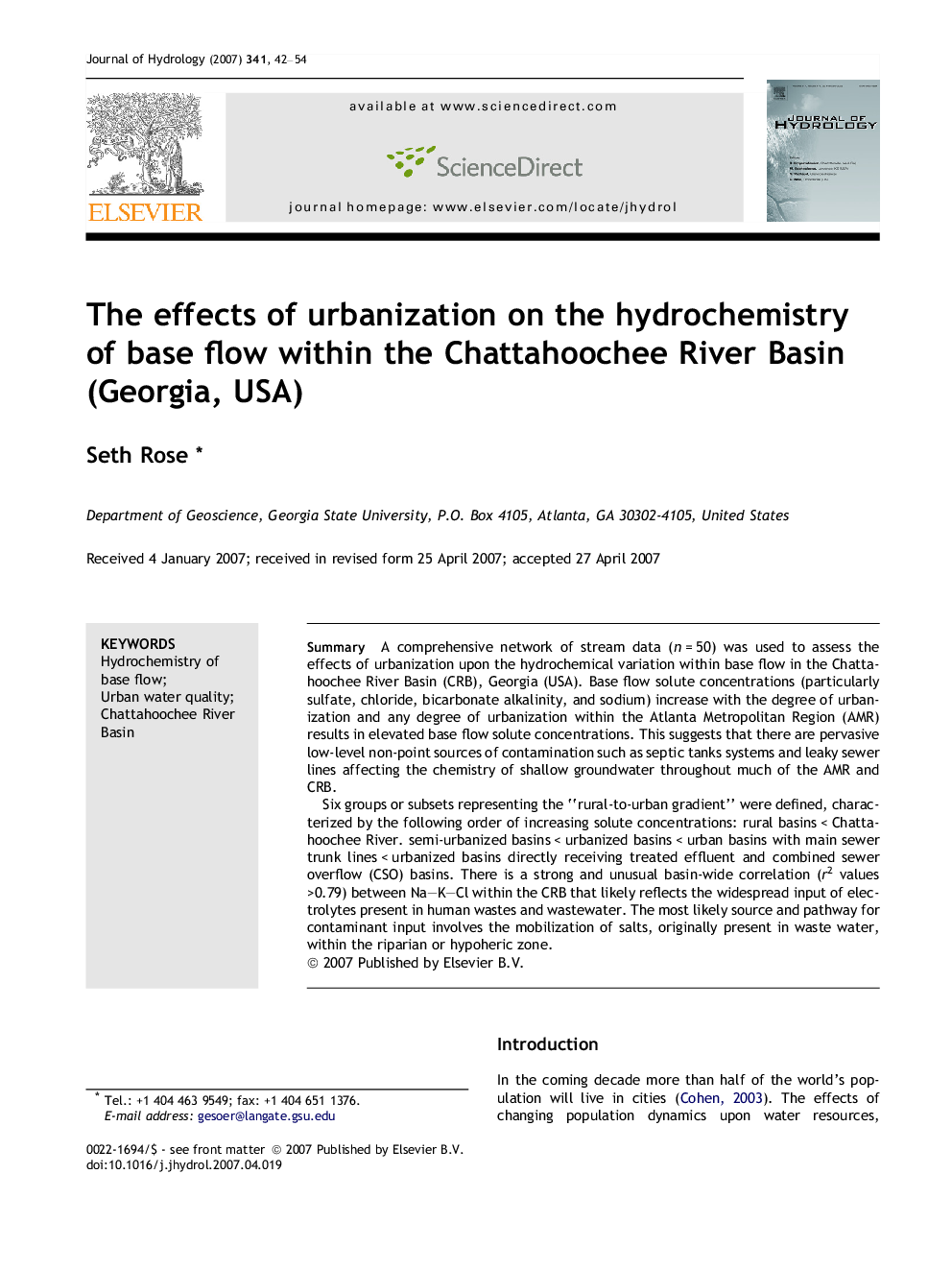| Article ID | Journal | Published Year | Pages | File Type |
|---|---|---|---|---|
| 4579807 | Journal of Hydrology | 2007 | 13 Pages |
SummaryA comprehensive network of stream data (n = 50) was used to assess the effects of urbanization upon the hydrochemical variation within base flow in the Chattahoochee River Basin (CRB), Georgia (USA). Base flow solute concentrations (particularly sulfate, chloride, bicarbonate alkalinity, and sodium) increase with the degree of urbanization and any degree of urbanization within the Atlanta Metropolitan Region (AMR) results in elevated base flow solute concentrations. This suggests that there are pervasive low-level non-point sources of contamination such as septic tanks systems and leaky sewer lines affecting the chemistry of shallow groundwater throughout much of the AMR and CRB.Six groups or subsets representing the “rural-to-urban gradient” were defined, characterized by the following order of increasing solute concentrations: rural basins < Chattahoochee River. semi-urbanized basins < urbanized basins < urban basins with main sewer trunk lines < urbanized basins directly receiving treated effluent and combined sewer overflow (CSO) basins. There is a strong and unusual basin-wide correlation (r2 values >0.79) between Na–K–Cl within the CRB that likely reflects the widespread input of electrolytes present in human wastes and wastewater. The most likely source and pathway for contaminant input involves the mobilization of salts, originally present in waste water, within the riparian or hypoheric zone.
